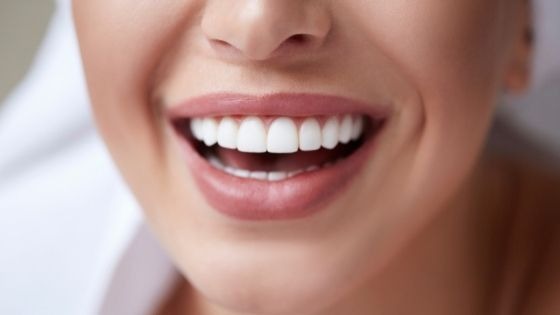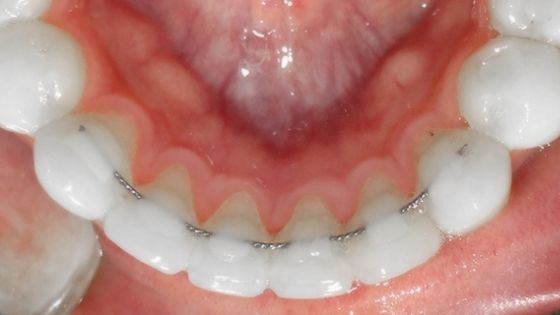Everything You Wanted to Know About PERMANENT RETAINER

Permanent retainer? Permanent retention devices are made of a metal wire bonded to the back of your teeth and adjusted for your bite. Orthodontists often recommend permanent or fixed retainer after braces because they can help keep your teeth from returning to their original position after orthodontic treatment.
- What is a retainer in orthodontic treatment?
- What are permanent retainers used for orthodontic treatment?
- Do you have to wear a removable retainer if you have a permanent retainer?
- Is it a permanent retainer for life?
- Why do orthodontists recommend permanent retainers?
- How do I have to clean them?
- How long do permanent retainers last?
- Are permanent retainers better?
- Can teeth still move with a permanent retainer?
- What are the disadvantages of using a permanent retainer?
- Conclusion
What is a retainer in orthodontic treatment?
A retainer is a necessary piece of orthodontic equipment, holding straightened teeth in place as the surrounding gum and bone adjust to their new position. Retainers can either be removable or fixed; however, many patients find that they prefer the latter for its stability.
You've undergone extensive treatment with an Orthodontist who has finally given you clearance to stop wearing your retainer full time! It's been great having straighter teeth and knowing that braces won't harm them anymore- but don't forget about those pesky retainers if you want these changes to last forever!
Permanent retainer
A permanent retainer is a wire that can be bonded to the back of your teeth. The wires are most often used on the lower ones, but they do exist for the upper. They're also called lingual retainers or cemented caps.
So, what is a retainer? Retainers are the appliances, fixed and removable that an orthodontist places at the end of treatment. Their purpose is to prevent them from returning to their previous position before we started this whole thing.
It's important to note that teeth have a natural tendency for movement. For us not to go back in time (or two years forward), it was necessary to put on "brakes."
If you don't follow the retention protocols, your teeth will return to their correct position. Retention guarantees us stability for life, though! This way, we'll preserve our beautiful smile from all those hours of work.
Removable retainers
You can remove the removable retainer while you are eating, brushing your teeth, and flossing. Unlike permanent retainers that need to stay in place all the time, the removable retainer is more convenient. It makes sense for those whose work requires them not to have their mouth open showing their front teeth or use dentures because of a missing tooth.
Removable retainers, also known as "Essix," provide a more conventional solution to wearing braces than traditional metal wire-based fixed orthodontic trays.
The basic premise for the device is that it's "removed," unlike other devices which are fused into place permanently and cannot be removed without risk of damaging teeth or oral tissues.
You have to take out your removable retainer before brushing and flossing teeth. It is essential for the health of your smile, front teeth, and mouth in general.
A removable retainer can offer similar treatment results with less disruption to lifestyle, including eating habits, among others, while still being removable, so you don't have to sacrifice your smile at all times!
What are permanent retainers used for orthodontic treatment?

"Permanent retainers are often recommended by orthodontists after braces to prevent your teeth from moving back to their original place."
A special wire (braided steel) is placed on the inside of your six anterior teeth, from canine to canine. It's always put underneath and sometimes also overtop your upper teeth as well.
Do you have to wear a removable retainer if you have a permanent retainer?
It is unnecessary to wear a removable retainer if you have a permanent one because the permanent retainer will never need replacement. That means your teeth will always be in the right position and so removal is unnecessary.
Is it a permanent retainer for life?
The name “permanent retainer” tells us exactly what it does: it stays on your teeth to keep them from moving.
You may have to wear a permanent retainer for the rest of your life. Get ready because if it becomes uncomfortable or irritates your gums, then know that you might need an orthodontist's help!
Generally, all dentists advise their patients to wear their retainers permanently to avoid unwanted movements.
However, as we have already advanced, this will not be any inconvenience for you if you choose the right one that is form-fitting and comfortable. It can help your teeth stay straight without being an annoyance when speaking or eating.
Fixed retainer wire bars are thin enough to remain hidden from sight even during talking with others. A bothersome tongue does not enter into considerations since nothing is blocking it!
Why do orthodontists recommend permanent retainers?
Permanent retainers have been a staple in the orthodontist community for decades. When patients are done with their braces, sometimes they need to take another step and get a permanent retainer fitted by an expert. These devices will keep your teeth from moving back to their previous position when you start eating or brushing again!
A permanent or fixed retainer is the best option after orthodontic treatment because it will stay in place and prevent your teeth from moving. And not only that, but it is also very inexpensive and less likely to be lost.
How do I have to clean them?
Brushing your teeth with a toothbrush can make daily oral hygiene easier. The problem is that you cannot remove a permanent retainer for cleaning. You will need to incorporate their hygiene into your brushing routine.
Every time you remove them from your mouth, brush around the bar to prevent deposits from building up in the area. That is essential for your oral hygiene.
Removable retainers should also be cleaned with a toothbrush, warm water, and mild soap each time they are taken out of one's mouth. This way, it'll go much quicker!
How long do permanent retainers last?
Braces are typically only worn for between 1 to 3 years. However, fixed retainers stay in place permanently, sometimes even decades later. Some people have been able to wear theirs for over 20 years!
Are permanent retainers better?
The benefits of a permanent retainer for teeth straightening outweigh the drawbacks. For one, they are not as likely to be lost or forgotten on trips and require less maintenance than removable ones. Another benefit is that we do not have to worry about flossing around them since it would damage the metal in their construction.
A permanent retainer may offer better long-term results than a temporary one because factors like age will contribute more naturally over time without interference from wear and tear. However, there can still be slip-ups, such as forgetting them when traveling, which may lead us back into using temporaries instead.
Can teeth still move with a permanent retainer?
A permanent retainer is more effective than braces in properly aligning the teeth 90% of the time, but they can also cause unintended tooth movement. In some cases, this requires orthodontic retreatment to be managed by a periodontist.
What are the disadvantages of using a permanent retainer?
The idea of having a permanent retainer is practical, but it has its downsides.
- Oral hygiene. A typical problem with the retainers is dental problems due to bad oral hygiene and tartar buildup.
- Adhesive. You would also need to ensure that the adhesive on your retainer isn't coming off or loosening, so periodically check if this still holds up in place correctly.
- Input procedure. The input procedure for attaching a permanent retainer may be long and uncomfortable. It can sometimes take up to an hour and discomfort and time to bond the retainer.
- Comfort. If you're always toting around a metal object in your mouth, it can be uncomfortable. For starters, the wire could rub up against your tongue and cause some irritation or scratches when things come loose.
Conclusion
Permanent retainers are necessary to keep the perfect smile and your teeth in place. If you have a removable retainer, it is important to wear them every night and during the day when eating and drinking.
You may need to replace your current retainer with one that fits better after an injury or surgery if they break. I hope this blog post has helped make more sense of many people's confusing topics!
